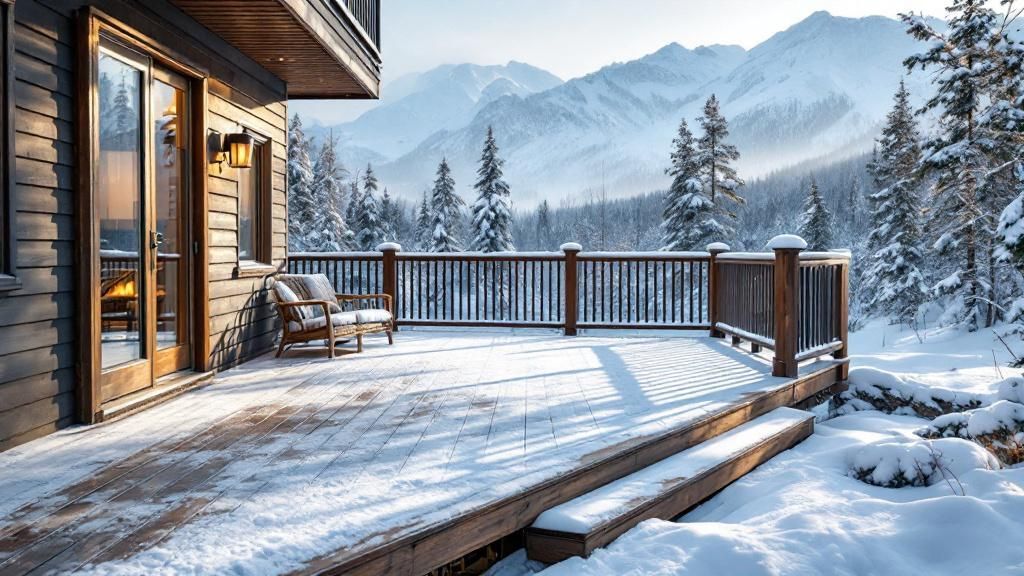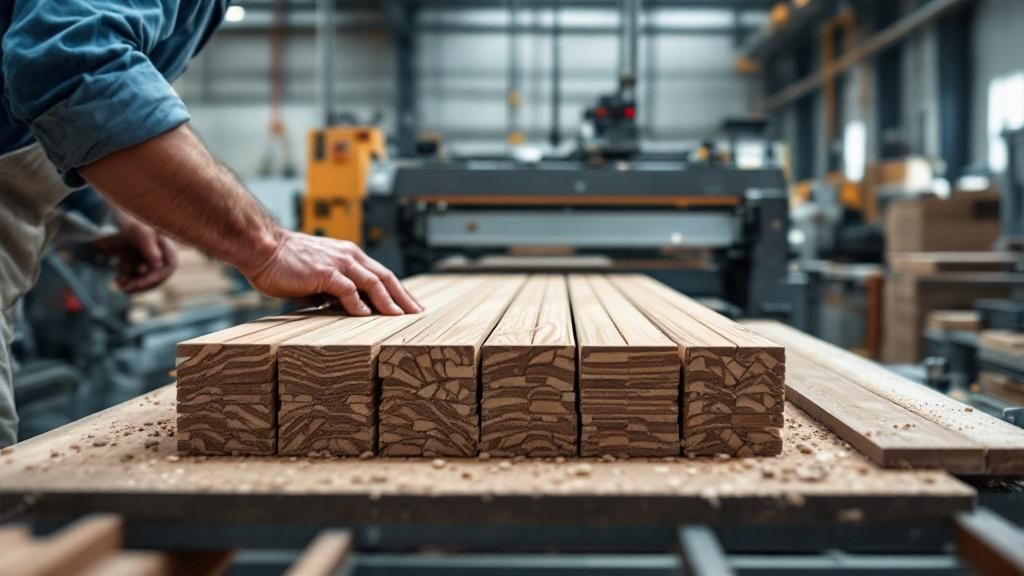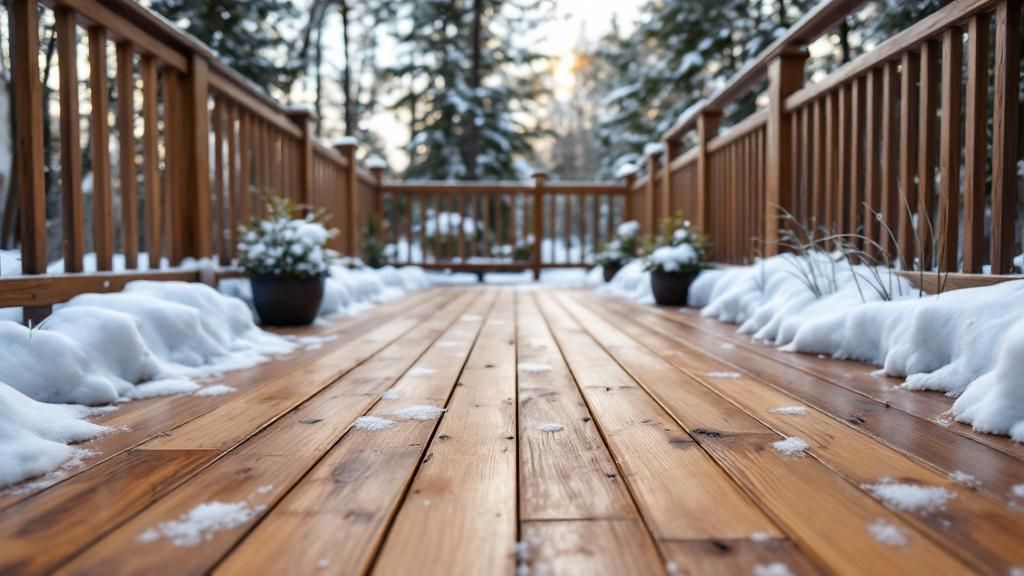
Why Composite Decking Is the Smart Choice for Cold Anchorage Winters
-
Composite decking is highly durable and ideal for cold, snowy climates like Anchorage.
-
It requires less maintenance than traditional wood decking.
-
The material resists moisture, cracking, and warping—common issues in freeze-thaw environments.
-
Many composite options are eco-friendly, made from recycled materials.
-
Composite decking can increase property value while supporting long-term savings.
With Anchorage’s long winters and extreme weather shifts, choosing the right decking material isn’t just about style—it’s about survival. Composite decking has emerged as a smart, long-term solution for homeowners and contractors across Alaska. Whether you’re updating an outdoor space or planning a new installation, understanding the benefits of composite decking in cold climates is key to making a confident decision.
What Makes Composite Decking Ideal for Anchorage Winters?
Traditional wood decks are vulnerable to moisture damage, warping, and cracking during Anchorage’s intense freeze-thaw cycles. Composite decking, on the other hand, is engineered to withstand these challenges. Built from a mix of recycled plastics and wood fibers, it doesn’t absorb moisture like wood does.
-
No need for sealing or staining in cold seasons
-
Won’t splinter, rot, or swell in freezing temps
-
Holds up better against snow and ice
Anchorage homeowners appreciate how low-maintenance composite decking is during the winter months. Snow slides off easier, and its textured surface reduces slipperiness.
The Science Behind Its Strength
Composite decking’s durability is more than just a marketing claim—it’s built into the material. Advanced techniques like friction extrusion and carbon-negative production embed CO2-absorbing materials directly into the decking structure.
-
Friction extrusion increases resistance to stress and flex
-
Carbon-negative materials help reduce environmental impact
-
Uniform structure means fewer weak spots and better longevity
This kind of tech-forward innovation ensures composite decking stands up to the unique demands of Alaska weather while appealing to eco-conscious builders and homeowners.

Low Maintenance, High Reward
Unlike cedar or redwood decks that require annual treatments, composite decks need only occasional cleaning. You won’t have to worry about mold, mildew, or reapplying protective coatings.
-
No splinters = safer for kids and pets
-
Less upkeep = lower long-term costs
-
Color retention = fewer cosmetic repairs
For Anchorage property owners looking to reduce maintenance tasks through the cold season, composite decking is a stress-free option that still looks great.
Trends That Fit the North
Home design trends in colder regions are leaning toward durability, sustainability, and modern aesthetics. Composite decking fits all three. In Alaska, we’re seeing a rise in:
-
Dark wood-toned decking with light metal railings
-
Wide-plank boards for contemporary appeal
-
Eco-conscious materials made from recycled plastics
These elements create bold, warm outdoor spaces—even when it’s -10°F outside. Composite decking also pairs well with other elements like fencing and hardscaping, allowing you to create a cohesive look.
Composite Decking and Your Property Value
Composite decking doesn’t just hold up—it adds value. Many homeowners see a 65–75% return on investment at resale, thanks to its durability and curb appeal. While wood may offer slightly higher returns upfront, the ongoing maintenance costs and weather-related damage often even the scales over time.
In Anchorage, where buyers are looking for resilience and style, composite decks are especially attractive. With minimal upkeep and lasting appearance, they’re ideal for long-term property planning.

Why Some Still Prefer Wood Decks
Natural wood’s charm is hard to beat. Its custom stain options and rustic texture appeal to those who want a timeless, handcrafted aesthetic. That said, it comes with more maintenance, higher long-term costs, and greater vulnerability to winter damage.
For residents balancing tradition with practicality, it’s common to mix materials—using composite for the deck itself and wood accents for railings or privacy screens.
Choosing the Right Installer in Anchorage
Anchorage’s challenging climate requires experienced contractors who understand how composite performs in snow, ice, and subzero temperatures. Titan has been serving the Anchorage, Eagle River, and Mat-Su Valley areas with expert sitework and landscaping services, including composite decking installations designed to last through Alaska’s toughest seasons.
Whether you’re planning a new deck or revamping your outdoor space, Titan brings years of hands-on knowledge to ensure structural integrity and lasting beauty.
Built to Last, Styled to Impress
Beyond strength, composite decking offers a wide variety of finishes, textures, and colors. Whether you’re looking to match your home’s siding or create contrast with natural elements, there’s a composite design to suit your aesthetic.
It’s also an ideal material to pair with other outdoor features such as:
-
Hardscaping installations (patios, fire pits)
-
Fence systems using weather-resistant materials
-
Low-voltage lighting for extended use in dark winters
Titan often incorporates composite decking into larger residential landscaping plans, offering an all-in-one approach for transforming your outdoor living area.
FAQs
Is composite decking really better for winter?
Yes. Its moisture resistance, slip-resistant texture, and structural stability make it well-suited to cold weather and snowy conditions.
Does composite decking crack in cold temperatures?
No. Unlike traditional wood, composite doesn’t crack, split, or warp during freeze-thaw cycles.
How long does composite decking last?
Many manufacturers offer warranties of 25–30 years, and with proper care, it can last even longer.
Can composite decking be installed in freezing weather?
It’s possible, but it’s best done during warmer windows in fall or spring for optimal performance and easier handling.